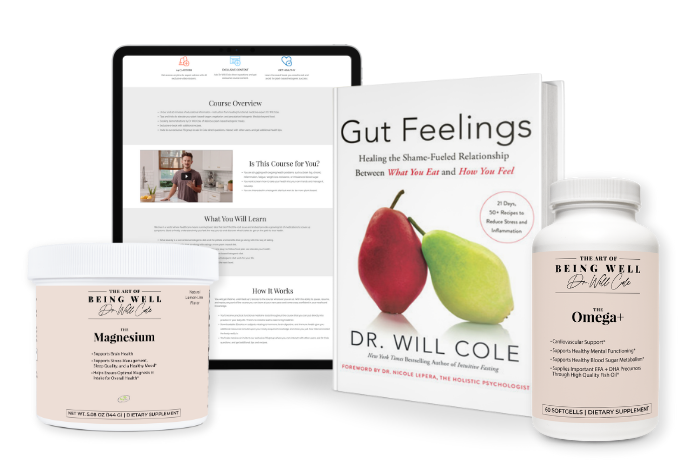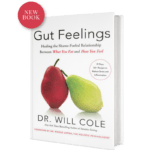How To Boost Your Energy & Stay Energized Throughout the Day

What does it take to get you through the day? More caffeine? More sugar? An emergency catnap? Many of my patients tell me that they never feel quite well-rested enough, no matter what they do, and as a society, we are more fatigued than ever, even when we get enough sleep. It’s an epidemic of fatigue.
More than 1 million Americans struggle with chronic fatigue, while millions more have varying degrees of lethargy. One primary reason for this epidemic is adrenal fatigue. Your adrenal glands release cortisol, your body’s major stress hormone, and properly functioning cortisol is supposed to start off high in the morning and slowly taper off as the day goes on. The problem occurs when your brain-adrenal (HPA) axis isn’t working the way it should. The miscommunication between your brain and your adrenals causes an imbalance of cortisol, which makes you feel constantly tired.
Your Adrenal Recharge Plan
Let’s take a look at how you can implement specific foods throughout your day to finally feel rested again.
Breakfast
Begin your morning by including adaptogenic herbs in your breakfast. Ashwagandha, rhodiola, and maca help balance cortisol levels. This smoothie also sneaks in some Brazil nuts, which are a hormone power food.
Adaptogenic Adrenal Balancing Smoothie
Ingredients
- 12 ounces full-fat coconut milk
- 1 tablespoon coconut oil or MCT oil
- 1 scoop collagen peptides
- 1 teaspoon ashwagandha powder
- 1 teaspoon rhodiola powder
- 1 tablespoon maca powder
- 1 cup frozen organic berries
- 1 drop stevia
- 1 cup spinach
- 5 Brazil nuts
Directions
Combine everything in a blender until smooth.
Lunch
Methylation is essential for a healthy brain and hormone balance. Folate and B12 help support methylation pathways, which help to balance our melatonin-cortisol rhythm. Sulfuric vegetables such as Brussels sprouts, onions, and garlic all contain these vital nutrients for methylation. By making fish the main component in this dish, you can also be sure you’re getting all the brain-boosting omega-3s you need.
Roasted Asian Salmon with Brussels Sprouts
Ingredients
- 4 cloves crushed garlic
- 1 1-inch piece fresh ginger, grated
- 1/4 cup coconut aminos
- 1/2 cup coconut oil
- 1 large white onion, sliced
- 1 cup Brussels sprouts, trimmed and sliced in half
- 1 pound wild-caught salmon filet, skinned, and cut into desired portions
Directions
Preheat oven to 450 degrees F and mix together garlic, ginger, coconut aminos, and coconut oil in a small bowl. Place Brussels sprouts in roasting pan and top with half of liquid mixture. Roast for about 15 minutes. Remove Brussels sprouts from oven, stir, and place salmon on top. Top with remaining liquid mixture. Roast until salmon is cooked through, five to ten minutes.
Snack
Sometimes you need an added jolt when the afternoon rolls around. These energy balls contain some of the best energizers in the food medicine world. Almonds and coconut provide your brain with the healthy fats it needs to function at maximum capacity and the addition of adaptogens like cordyceps and rhodiola add the kick you need to face the rest of your day head-on….no nap required!
Coconut-Almond Energy Balls
Ingredients
- 2 cups almonds
- 1 cup shredded coconut, unsweetened
- 2 cups Medjool dates, pitted
- 2 tablespoons coconut oil
- 1/2 teaspoon sea salt
- 1 teaspoon vanilla extract
- 1 teaspoon cordyceps
- 1 teaspoon rhodiola, optional (if you want an extra boost)
Directions
In a food processor, blend almonds and coconut until broken down. Add in remaining ingredients and blend to form a paste. Scoop desired size and roll into balls. Place on parchment-lined baking sheet and let set in freezer for one hour. Remove and store in sealed container.
Dinner
Since your gut is considered your “second brain,” it’s important to bring healing to the gut in order to reduce inflammation and promote healthy function of the brain-adrenal (HPA) axis. Including bone broth with every meal can help facilitate healing leaky gut as the gelatin in the broth actually heals the lining of the digestive tract and assists with the digestion of nutrients in the foods you are eating. Make a big pot of bone broth and sip throughout the day! For dinner, get your bone broth in by using it as a base for this soup.
Parsnip and Pear Soup with Fried Sage
Ingredients
- 3 tablespoons coconut oil
- 1 large yellow onion, chopped
- 2 cloves garlic, minced
- 2-inch piece ginger, peeled and minced
- 4 cups bone broth
- 2 pounds parsnips, chopped into 1 1/2-inch chunks
- 1 large firm pear, cored and chopped into 1 1/2-inch chunks
- 1/2 teaspoon sea salt
- 1/4 cup chopped fresh sage
- 1 pound cooked, shredded chicken
Directions
Heat 1 tablespoon of the coconut oil in a pot over medium heat. When the pot is warm and oil is melted, add the onion and cook, stirring occasionally. Add the garlic and ginger, and cook until fragrant. Add the bone broth and parsnips, bring to boil, turn down to a simmer, and let cook, covered for 10 minutes. Add the pear and salt and let cook until they are both soft. Heat the rest of the cooking fat in a small skillet on medium-high heat. When the fat has melted add the sage and cook until crispy. Blend the soup on high to create a thick puree, add more salt to taste if needed and add in warm cooked, shredded chicken. Serve garnished with fried sage.
The One-Day Energy Boost Diet
Food for Fuel
Your brain controls your energy levels, and it can use two things for fuel: fat or sugar. Most people struggling with fatigue are in sugar-burning mode, shoveling in carbs all day long to keep the engine running, and becoming “hangry” (hungry and angry’s grumpy spawn) if they don’t get their fix. Even healthy, clean eaters can be stuck on this blood sugar roller coaster if they fuel mostly on carb-rich foods, especially simple carbs that burn fast and don’t last, such as sugar and refined grains. There is a better way.
The most sustainable way to be your most energetic self is to switch from being a sugar burner to being primarily a fat burner. Your brain is made up of 60 percent fat. When you don’t have enough healthy fats in your diet, you’re depriving your brain of the very thing it is made of, and needs to work optimally. Considering most people rely on simple carbs like grains and refined sugar, it’s no wonder so many people suffer from concentration issues and brain fog.
View More At Our Store
Purchase personally curated supplements
and Dr. Will Cole’s books!

The information on this website has not been evaluated by the Food & Drug Administration or any other medical body. We do not aim to diagnose, treat, cure or prevent any illness or disease. Information is shared for educational purposes only. You must consult your doctor before acting on any content on this website, especially if you are pregnant, nursing, taking medication, or have a medical condition.
Our articles may include products that have been independently chosen and recommended by Dr. Will Cole and our editors. If you purchase something mentioned in this article, we may earn a small commission.

BY DR. WILL COLE
Dr. Will Cole, DNM, IFMCP, DC is a leading functional medicine expert who consults people around the globe, starting one of the first functional medicine telehealth centers in the world. Named one of the top 50 functional and integrative doctors in the nation, Dr. Will Cole provides a functional medicine approach for thyroid issues, autoimmune conditions, hormonal imbalances, digestive disorders, and brain problems. He is also the host of the popular The Art of Being Well podcast and the New York Times bestselling author of Intuitive Fasting, Ketotarian, Gut Feelings, and The Inflammation Spectrum.

Gut Feelings
Healing The Shame-Fueled Relationship
Between What You Eat And How You Feel
